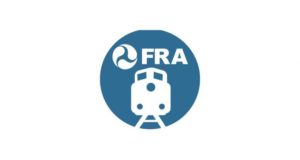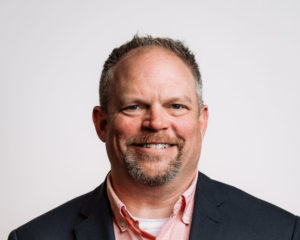European group gears up for Florida high-speed rail
Written by jroodA consortium of European companies is vying to finance and operate Florida's high-speed rail line between Tampa and Orlando, the Sunshine State News reports. The group, headed by train maker Alstom SA of France, will undoubtedly face spirited competition in its bid for the multi-billion-dollar project. But the seven-company multinational consortium says no one can rival its combined experience and financial wherewithal.
"The group’s
proposal to design, build, finance, operate and maintain the system will
include a private financing dimension that offers the best solution for Florida
once the specific bidding rules are established," says Alstom spokesman
Tim Brown.
Envisioning a
"public-private partnership that brings private funding to table,"
Brown said the team’s blend of global and Florida experience will "create
jobs, enhance mobility and help ensure that tax dollars are invested
wisely."
He said no public
financing such as taxpayer-backed bonds would be requested by the consortium.
VINCI Concessions, one of
the team’s equity partners, has a world-wide track record with concession-style
financing models in which private companies, in return for bringing their own
financing, are granted permission to operate rail systems over periods of 30
years or more.
"When the public and
private sectors work together, we always achieve a better outcome," said Fadi
Selwan, business development director at VINCI, also based in France.
The Florida Department of
Transportation, which has received a down payment of $800 million from
Washington to launch the high-speed rail project, will select companies to
build, operate and maintain the system. The eventual price tag is
conservatively estimated at $2.7 billion, and tea party groups, anticipating
massive cost overruns, are pressuring incoming Gov. Rick Scott to derail the
project.
Noting that Florida
voters rescinded their approval of a high-speed rail project in 2004, 29 state
tea party leaders wrote to Scott, saying, "private solutions to
transportation between Tampa and Orlando already exist."
Scott has said that even
if Washington comes through with its promised $2 billion for the rail venture,
the state shouldn’t be on the hook for any additional expenses.
"Every project we
do, we have to get return for taxpayers," Scott said during an election-eve
debate in Tampa. "So the way I look at it, if the federal government is
going to fund all of it, and there’s no — there’s nothing (that’s) going to
cost the state any money, let’s look at it."
Nazih Haddad, chief
operating officer of Florida Rail Enterprise, agrees. "We’re looking at a
concession period of 30 years. (Companies) will be on the hook for that
time," said Haddad, whose office is a division of FDOT.
Last week, a two-day FDOT
seminar on the high-speed venture attracted 1,500 people, representing hundreds
of prospective bidders. An initial phase of corridor-clearing work will be
quickly followed by the vetting and selection of "design-build"
contractors for the rail system itself.
Requests for
qualifications will be set in December and a short list of bidders — perhaps
up to four — will be drawn by mid-March, with final selection by the end of
2011, Haddad told Sunshine State News.
"If all the stars
align, the rail line will be up and running by the end of 2015," he said.
Florida could benefit
from rising global competition among high-speed rail vendors. In addition to
Alstom, Kawasaki Heavy Industries Ltd., Siemens AG and Bombardier Inc. build
systems around the world. China recently entered the fray with several
companies of its own, and the Obama administration has invited all comers to
bid on U.S. projects.
Alstom appears to be the
thoroughbred of the field, providing more than 70 percent of very high-speed
trains across the globe. Its V150 test train set a world record of 357 mph in
2007. Its AGV model is capable of traveling at commercial speeds in excess of
225 mph. Lower speeds are envisioned on the Tampa-Orlando run, with FDOT
targeting a high end of 168 mph, though Haddad says the state wants trains to
be able to hit 200 mph in anticipation of a future, yet-to-be-funded leg to
Miami. Initial schedule projections put the Tampa-Orlando trip time at about 55
minutes, including station stops at Lakeland, Disney and International Drive.
The Alstom-led consortium
believes it is best equipped to provide a "turn-key" operation. Along
with VINCI’s financial arm and Alstom’s train-building and maintenance unit,
Alstom, VINCI, OHL and Archer Western would lead engineering, design, supply (per
Buy America standards) and construction. Using Alstom’s rolling stock, Virgin Trains, with VINCI and
OHL, would operate the "state of the art" system, officials say.
"High-speed rail has
proven to be a great driver of economic development, urban mobility, and a
cleaner environment around the world. Virgin and our partners realize the
importance of combining strong private expertise and finance with government
investment to maximize the economic development benefits and ensure every
dollar is wisely invested, said Richard Branson, founder of London-based
Virgin.
Virgin’s train division
is Britain’s fastest-growing rail company, serving London, Manchester,
Liverpool, Birmingham and Glasgow with 73 lines. Alstom’s trains currently
operate in France, Spain, the United Kingdom, Korea, Belgium, Switzerland,
Germany and the Netherlands. The company’s facility in Hornell, N.Y., is the
largest passenger rail manufacturing facility in the United States.
Bolstering the
consortium’s Florida presence, equity partner OHL is one of FDOT’s biggest
contractors. The Spanish construction giant has reached financial close on
three projects with the state involving private financing. The firm has been
active in the high-speed rail sector since Spain’s first HSR project opened in
1992. OHL is currently building the Metrorail extension that connects the Miami
Airport to downtown and recently broke ground to renovate or replace each of
the service plazas on Florida’s Turnpike between Miami and Orlando.
Engineering companies
AECOM and PBS&J — which both have a longstanding presence in Florida —
would serve in support roles as non-equity partners.
Florida’s high-speed line
is forecast to carry approximately 2.4 million riders in the first year, based
on one-way ticket prices of $15-$30. Revenues are estimated at roughly $49
million in the inaugural year. Rail enthusiasts approvingly note that Amtrak’s
high-speed Acela line through the Northeast corridor is the only route that
turns a profit for the passenger railroad. Acela can charge higher ticket
prices for the convenience of time-conscious commuters.
Nevertheless, skeptics
continue to question both the financial viability and the logistics of high-speed
rail in Central Florida.
Analyses suggest that poor ground transportation at
either end of the line would add significantly to the total transport time,
making high-speed rail no faster than travel by car.
As for the money trail,
"It is certain that there will be government subsidies to cover operating
losses," predicts Orlando tea party activist Tom Tillison.
Brown
maintains that a concession deal with Alstom’s team would inoculate Florida
against a financial hemorrhage.
"We take the risk and have an
opportunity to make a profit," he says.





